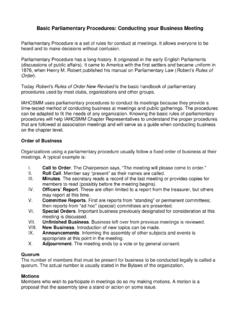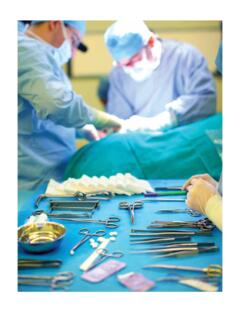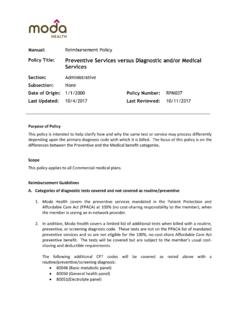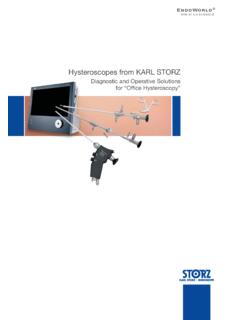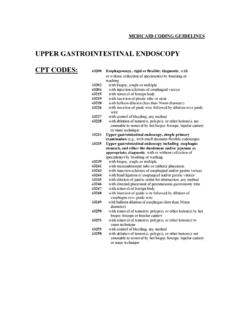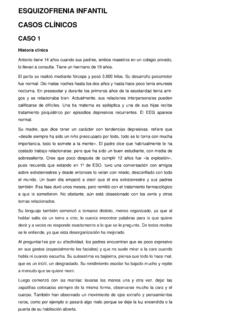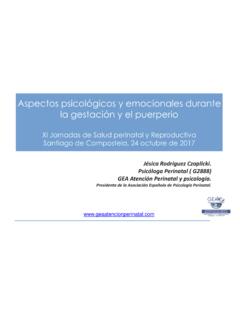Transcription of Textbook Preview SURGICAL INSTRUMENTS
1 SURGICAL INSTRUMENTSThe World ofby RICK SCHULTZThe Definitive Inspection TextbookTextbook Preview501 full color pages1,198 high resolution photosGlossy, hard coverLay flat designSCISSORSD iagram of a black handled scissorSerrated edgeKnife edge Q: Do all scissors go dull? A: Yes. Every scissor goes dull no matter what size, specialty, manufacturer, or design. Q: Does sterilization dull a scissor? A: Generally, no. However, when old autoclaves produce dirty steam, the scissor blade edges can become stained, which can cause the scissor not to cut. Q: Can all scissors be resharpened? A: Yes. Every scissor can be resharpened. Make sure the repair vendor is properly trained, especially on SuperCut scissors (black-handled). Q: How often should scissors be tested? A: Scissors should be tested 1 to 2 times per week. The proactive approach is picking 2 days per week as scissor testing days. Using an instrument tracking system will allow the facility to track sharpening frequency. Eventually, a large percentage of scissors will be sharp.
2 Q: Is the scissor testing standard red and yellow scissor test material? A: Yes. The industry standard is to use red scissor test material for scissors longer than 41 2" in overall length and yellow scissor test material for scissors that measure 41 2" and shorter. Yellow scissor test material is used on 41 2" scissors. Q: Do all repair technicians know how to sharpen scissors? A: No. Experience and proper training is key, and many times repair technicians are learning on your expensive instrument inventory. The hospital should verify how many months of training/employment the repair technician has. On average, a repair technician needs 9 to 12 months of training. This training should not be performed on the facility s inventory of INSTRUMENTS . You cannot teach experience. Q: Is it true that certain scissors need to be sharpened more often? A: Yes. The black-handled SuperCut scissor needs to be sharpened the most (quarterly) because it has a knife edge. Q: Can scissors be over-sharpened?
3 A: Yes. Scissors can be over-sharpened by inexperienced repair technicians. Only send out dull scissors for resharpening. Not all scissors in a set need to be sharpened. Q: Can serrated scissors be sharpened? A: Yes. The repair technician should know how to sharpen a serrated scissor. But remember, experience cannot be taught. An inexperienced repair technician may not know the correct method. Q: Do all black-handled scissors have a serrated edge? A: No. Black-handled SuperCut scissors have the option of serrated edges or not. One serrated blade and one knife blade is the most popular configuration. Q: Should gold-handled scissors be sharpened more often? A: No. Gold-handled scissors stay sharper longer. They should first be tested before sending them out for sharpening. Q: What is the reason tungsten carbide is used in scissors?Frequently Asked QuestionsSCISSORSMayo Scissor, Tungsten CarbideInstrument Name: Mayo Scissor, Tungsten Carbide Also Known As: Gold MayoSimilar INSTRUMENTS with Same Inspection: All scissorsOverall Length: 51 2" (14 cm), 63 4" ( cm), 9" ( cm), straight or curvedInstrument Use: Cutting non-delicate tissue/tougher tissue (cartilage/tendons)Tray Assembly Tip: Sterilize with rings slightly openSharpness Test Standard: Red scissor test materialTips should be and close rings.
4 Cutting action should be the rings and inspect for blood and tissue on both for separation of for cracks on both both blades for cracks and seams for seams for blades for HOLDERSMayo-Hegar Needle Holder, Tungsten Carbide Jaws and Standard JawsInstrument Name: Mayo-Hegar Needle Holder, Tungsten Carbide Jaws and Standard JawsAlso Known As: Needle driver Similar INSTRUMENTS with Same Inspection: All other needle holdersOverall Length: 7" ( cm) Instrument Use: Driving suture needles in the suturing processTray Assembly Tip: Sterilize with ratchets in the open positionJawsBox lockShanksRingsStandard stainless jaws. Once these jaws wear out,the instrument cannot berejawed and must be carbide jaws. Much harder metal than stainless steel. The jaw tread wears out very slowly. Jaws last longer. Grips the suture needle better. When the jaws wear out, the repair vendor can simply replace. Tungsten carbide is indicated by 24-karat gold steel jaw. Tungsten carbide jaw.
5 Tread wear Tread WearTungsten Carbide JawAcceptableNot acceptableNEEDLE HOLDERST ypes of Needle Holders Closed position Open positionOlsen-HegarHeaneyCrile-WoodRyder Mayo-Hegar, Tungsten CarbideMayo-HegarStandard, non-carbide Olsen-HegarHeaneyCrile-WoodRyderMayo-Heg ar, Tungsten CarbideMayo-HegarStandard, non-carbide LAPAROSCOPICF requently Asked Questions Q: There is a space between the insulation and the tip of the instrument. Is this okay? A: No. The instrument must be immediately removed from service and sent out for repair. A gap can allow blood and fluids to enter under the insulation. If the abdomen is insufflated, it will cause the blood to be forced under the : How is loose laparoscopic insulation visually tested?A: To test the insulation visually, inspect the entire shaft for any nicks or cuts. Next, lightly pull back on the insulation. If the insulation slides back, the instrument is in need of re-insulation. Q: What is the port near the handle used for? A: This port is used to flush the instrument during the cleaning process.
6 Q: Where are the most difficult areas to clean on a laparoscopic instrument? A: The most challenging areas to clean are the jaws and distal working portion (linkage). This is where blood and fluids can hide. Manual cleaning and the use of an ultrasonic irrigator will assist in cleaning these areas. Q: How are laparoscopic scissors tested for sharpness? A: Unless stated differently in the Instructions For Use (IFU), laparoscopic scissors are tested on one thickness of gift wrap tissue paper or yellow scissor test material. Q: How is the jaw tension tested on laparoscopic graspers? A: Gently clamp a lint-free towel with the laparoscopic grasper and pull back. The grasper should not slip from the towel. Q: What methods can be used to prevent damage to the tips of laparoscopic INSTRUMENTS ? A: Using a tip protector will help protect sharp tips and delicate INSTRUMENTS from damage or place INSTRUMENTS in a secure instrument rack and Flushing and IrrigationWith the distal tip underwater, connect syringe to irrigation port and draw up water from cleaning sink.
7 Force cleaning fluids in and out of in insulationInsulation pull test LAPAROSCOPICL aparoscopic Claw Forcep, 10 mmInstrument Name: Laparoscopic Claw Forcep, 10 mm Also Known As: Claw grasper, Clickline Similar INSTRUMENTS with Same Inspection: All three-piece laparoscopic grasping forcepsOverall Length: Shaft: 36 cm, 43 cm Width: Diameter: 5 mm, 10 mm Instrument Use: Grasping tissue during minimally invasive proceduresLaparoscopic Claw Forcep, DisassembledLaparoscopic Claw Forcep, AssembledOuter teeth for blood and may assist during the cleaning post for handle for knob should move left and for cracks on both collar for secure fit. There should be no gap.*Inspect for missing/torn size brush may assist with to remove drive rod.*Insulation testing may assist in locating pin holes which are usually not visible.*Inspect for missing/torn RING-HANDLED FORCEPSK elly ForcepInstrument Name: Kelly ForcepAlso Known As: Snaps (often confused with Rochester Pean)Similar INSTRUMENTS with Same Inspection: All hemostatsOverall Length: 51 2" (14 cm), half serrated jawsInstrument Use: Clamping off vesselsTray Assembly Tip: Sterilize with ratchets in the open positionSeparate the rings and inspect for blood and tissue on both for cracks on both should meet evenly with no ratchet.
8 Verify it locks in each both jaws for dents. Inspect serrations for blood and Howard Atwood Kelly (1858-1943)Credited with establishing gynecology as a specialty by developing new SURGICAL approaches to GYN diseases. One of the founders of Johns Hopkins University School of Medicine (Baltimore, MD,1893)Kelly forcep has half serrated forcep has fully serrated both jaws for blood and RING-HANDLED FORCEPSMost Common Hemostats HartmanHalstedKellyCrileRochester-PeanOc hsner (Kocher)HartmanHalstedKellyCrileRocheste r-PeanOchsner (Kocher)ResectoscopeInstrument Name: Resectoscope Also Known As: bipolar resectoscope, Urology resectoscopeInstrument Use: Removal or biopsy of lesions of the bladder, prostate, or urethraTray Assembly Tip: Very delicate instrument. A protection case may reduce should be ceramic tip for cracks and connection is for bent for cracks on both , assembledInspect holes for blood and for and close testing spring size brush may assist with indicates the diameter of the sheath.
9 Yellow indicates 26 French (Fr.)Color indicates scope degree. Red indicates 30 .UROLOGYTorn insulation. REMOVE FROM SERVICE IMMEDIATELY AND SEND OUT FOR Laparoscopic Spatula Cause: The insulation may have been damaged during use. Over time, the insulation may become brittle and chip off. Effect: The insulation is torn/missing. The instrument should be removed from service immediately and sent for repair. Continued use may result in the insulation dropping into the SURGICAL site and cause a significant patient risk. Prevention: This instrument requires visual inspection and insulation testing after every use. CARE AND HANDLINGT estimonials It is the Encyclopedia Britannica for SURGICAL INSTRUMENTS . The picture-in-picture detail is awesome to show proper inspection points. - , North Carolina Nothing short of being the go-to resource for instrument knowledge and care and handling for the novice and expert. - , MBA, CRCST, CIS, CHL, Ohio The Textbook even provides an unprecedented, behind the scenes look into instrument repair and maintenance.
10 Rick s new book is a home run and a must read for Sterile Processing professionals. - , BSN, RN, CCSVP, CMRP, Pennsylvania An outstanding instructional guide. I would have loved to have such a work when I started 37 years ago! , PhD, OhioAbout The Book 501 pages with 1,198 high resolution photos Hardcover lay flat hidden spiral binding 70 lb super white paper with 20 section tabs FAQ s for each section Includes SURGICAL Instrument Repair and How to Measure sections Authored by multiple award-winning SURGICAL instrument expert, Rick SchultzSURGICAL INSTRUMENTSThe World ofThe Definitive Inspection TextbookFOR QUESTIONS: or call 330-714-9088 HOW TO ORDER.

